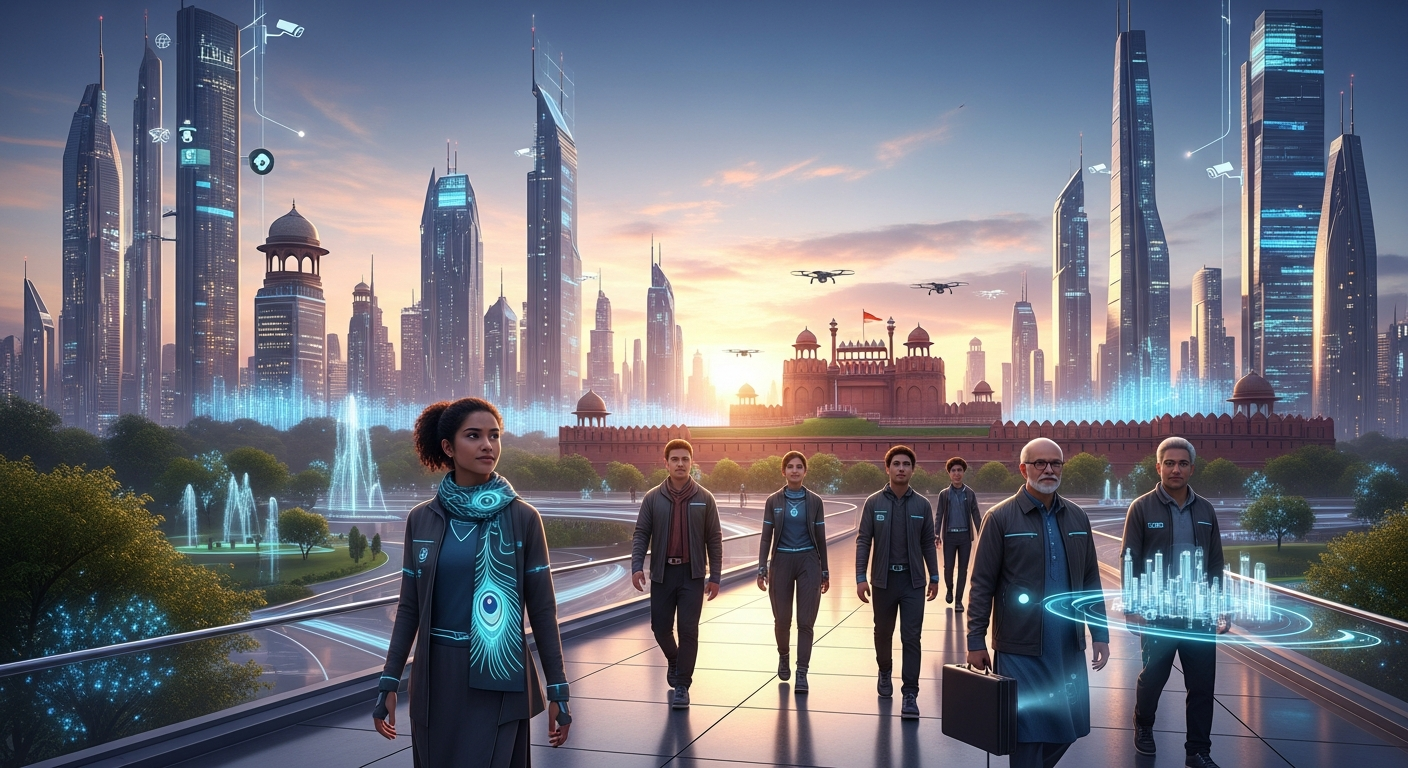
The recent Delhi blast near the Red Fort has deeply shaken me, as it has countless others. My thoughts immediately turn to the innocent lives lost and those injured, and I find myself reflecting on the urgent need for a robust and forward-looking approach to national security. Union Home Minister Amit Shah's strong statement, vowing strict punishment to send a "message to the world" [https://timesofindia.indiatimes.com/india/aware-of-potential-of-becoming-broader-us-after-india-calls-delhi-blast-terror-attack-shah-vows-msg-to-world/articleshow/125302882.cms], and Prime Minister Narendra Modi's visit to the injured at LNJP hospital [https://www.hindustantimes.com/india-news/delhi-blast-live-update-red-fort-car-blast-dr-umar-nabi-nia-police-cops-amit-shah-pm-modi-rekha-gupta-latest-probe-101763003049990.html] underscore the gravity of this event.
This tragic incident, allegedly orchestrated by individuals like Dr. Umar Nabi, Muzammil Shakeel, Dr. Adil, Dr. Shaheen, and Zamil, with links to Al Falah University [https://www.hindustantimes.com/india-news/delhi-blast-live-update-red-fort-car-blast-dr-umar-nabi-nia-police-cops-amit-shah-pm-modi-rekha-gupta-latest-probe-101763003049990.html], brings back to mind discussions I've had over the years about leveraging technology for safety. I recall a blog I penned, "Ropeways Can Save Lives" [http://emailothers.blogspot.com/2018/08/rope-ways-can-save-lives.html], where I discussed crowd management at large gatherings like the Kumbh Mela.
The core idea I wanted to convey then was the critical need to anticipate and prevent chaos, rather than merely reacting to it. I had suggested implementing technologies like RFID wristbands and advanced CCTV systems with facial recognition to effectively monitor and manage large crowds, thereby minimizing the risk of stampedes and enhancing overall security. Now, seeing how things have unfolded in Delhi, with intelligence agencies like the NIA piecing together a complex plot, including reports of 32 vehicles being prepped for coordinated attacks [https://www.hindustantimes.com/india-news/delhi-blast-live-update-red-fort-car-blast-dr-umar-nabi-nia-police-cops-amit-shah-pm-modi-rekha-gupta-latest-probe-101763003049990.html], it's striking how relevant that earlier insight still is. Reflecting on it today, I feel a sense of validation regarding the need for proactive, technology-driven surveillance and crowd control, and also a renewed urgency to revisit those earlier ideas, because they clearly hold value in the current context.
The interconnectedness of the suspects, even extending to individuals like Dr. Muzaffar, Dr. Adeel Rather, Faheem, and Dr. Arif, highlights the intricate nature of modern threats. The suspension of Al Falah University's membership by the Association of Indian Universities (AIU) and the show-cause notice from the National Assessment and Accreditation Council (NAAC) [https://www.hindustantimes.com/india-news/delhi-blast-live-update-red-fort-car-blast-dr-umar-nabi-nia-police-cops-amit-shah-pm-modi-rekha-gupta-latest-probe-101763003049990.html] further emphasize how deeply such networks can infiltrate various sectors.
Amidst these challenges, the call for unity and a strong national resolve resonates deeply with me. Syed Ahmed Bukhari, the Shahi Imam of Jama Masjid, condemned the "abominable terror attack" and asserted that "terrorism has no ground" in civil society, alongside the statement by prominent Indian Muslims including former CEC SY Qureshi, Shahid Siddiqui, Gen Zameeruddin Shah, Najeeb Jung, and Saeed Shervani, reinforces the spirit of communal harmony. President Droupadi Murmu's minute of silence in Botswana and Argentinian Ambassador Mariano Caucino's condemnation [https://www.hindustantimes.com/india-news/delhi-blast-live-update-red-fort-car-blast-dr-umar-nabi-nia-police-cops-amit-shah-pm-modi-rekha-gupta-latest-probe-101763003049990.html] speak to the global solidarity against such acts.
I am reminded of my piece, "A (not so) Hidden Message?" [http://mylinkedinposting.blogspot.com/2020/02/virtuous-circle.html], where I spoke of creating a "World Peace Complex" rooted in unity. This incident, while devastating, can serve as a potent reminder of our collective strength when we stand together against forces that seek to divide.
The vigilance of individuals like Joint CP Milind Dumbre and DGP Gaurav Yadav, and the swift action taken, as Pratul Shah Deo lauded [https://www.hindustantimes.com/india-news/delhi-blast-live-update-red-fort-car-blast-dr-umar-nabi-nia-police-cops-amit-shah-pm-modi-rekha-gupta-latest-probe-101763003049990.html], are commendable. However, as Congress leader Rakesh Sinha's questions about ceasefires and Akhilesh Yadav's remarks on intelligence failure suggest [https://www.hindustantimes.com/india-news/delhi-blast-live-update-red-fort-car-blast-dr-umar-nabi-nia-police-cops-amit-shah-pm-modi-rekha-gupta-latest-probe-101763003049990.html], there's always room for introspection and improvement in our security apparatus. British officials like UK Deputy PM David Lammy and British Indian Minister Seema Malhotra also extended their condolences, emphasizing the international community's concern. Even Himanta Biswa Sarma has highlighted the arrests related to social media posts following the blasts, showing the wide-ranging impact and responses.
My reflection from "Incredible India" [http://myblogepage.blogspot.com/2016/05/incredible-india.html] still holds true: we must direct our energy towards substantive challenges and proactive solutions rather than getting sidetracked. True security lies not just in punitive measures, but in foresight, technological adoption, and an unshakeable commitment to unity.
Regards, Hemen Parekh
Of course, if you wish, you can debate this topic with my Virtual Avatar at : hemenparekh.ai






No comments:
Post a Comment